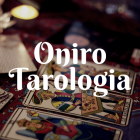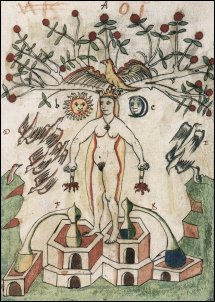The symbolism of the tree
I recently published a post about some symbolic themes underlying the Star of the Tarot. The Tarot Star can be defined as a “parturient” woman.
I would now like to discuss a symbolic theme that is very dear to alchemists. A theme that we find on Arcanum XVII, the Star. It is the alchemical theme of the “tree of philosophers”. This important archetipal imagery connects the tree to the bird symbol.
It is a symbolic theme that we find in numerous treatises and alchemical depictions.
There are numerous symbolic motifs associated with the tree. We mention the cosmic tree, the axis of the world, the “sacred pole”. Or the heavenly tree of knowledge. And also: the cosmic cycle of death and rebirth and the reversed tree of the Vedas.
First of all the tree is a symbol of female nature like the woman of the Star. The woman is in fact a source of life, just like the tree. Let’s imagine the importance of the tree for primitive populations. The tree is a source of wood to build weapons and shelters and to nurture fire. The fruits of the tree are nourishment. Can we imagine the primitive wonder in front of a bare tree in winter that miraculously flourishes in the spring?
Symbolism of the bird
The bird is an equally complex symbol. It is a creature associated with angels, souls and the divinity itself. The eagle, for instance, is a solar animal associated to Horus and Zeus. A symbol which has been later associated with Saint John the Evangelist.
Psychologically the bird is associated with wisdom, the wisdom of those who can observe the world from above. The bird also symbolizes ideas, therefore jungian thinking function. Indeed, thinking has a spiritual nature and it is “winged”.
What is the relationship between the symbols of the tree and the bird? And why does this image fit into the depictions of the Arcanum of the Star of the Tarot?
Alchemical symbols of the tree
In a previous article, I talked about the theme of birth connected to Arcanum XVII. I here summarize the main interpretations of the philosophical tree in relation to the theme of birth and the Star of the Tarot.
- The tree of philosophers as a cosmic tree. The Vedic tree whose roots are planted in the earth while the crown corresponds to the celestial vault with its stars. In this vision the birds represent the “souls” that descend from the stars and that (re) incarnate becoming “matter” in the maternal womb of the Star woman.
- The bird as a mercurial symbol, the “arboreal spirit”, which gives shape and life to the vegetation. The alchemists believed that in the trees flowed the “prima materia” of the alchemical work. It is the philosophical mercury as “soul of the world” and origin of creation. Just like the woman gives life and feeds human beings with her “fruits” (the breast)!
- The tree and its mineral and material riches of “stellar” origin. According to an ancient conception the earth’s matter derives from the seven planets and its fruits or seeds are scattered in the world by birds. There is indeed an association between planets and metals. For example: iron = Mars, lead = Saturn, etc.
Psychological interpretation of the Star symbolism
In a psychological interpretation, the tree connects the sky with the earth. That is, it relates the spiritual to the matter. The “Logos”, (masculine energy) is connected with matter (the “mater”, “Eros”, the feminine principle).
In fact, if the bird represents the male and spiritual component of the tree, the female element represents its generative nature. It’s the material energy that makes birth and growth possible.
In many traditions and myths we find a female entity next to the tree. For example, as a nymph or wood-protecting spirit, or, in the most “chthonic” version, as a dragon or snake. Just like in the biblical theme of Genesis!



1 thoughts